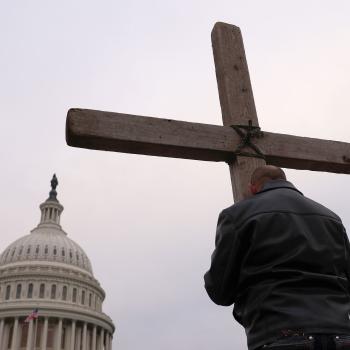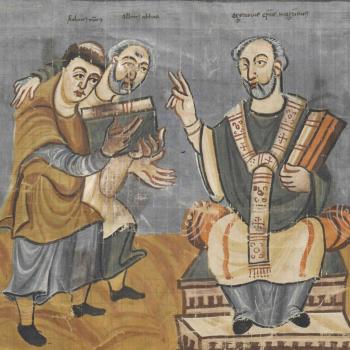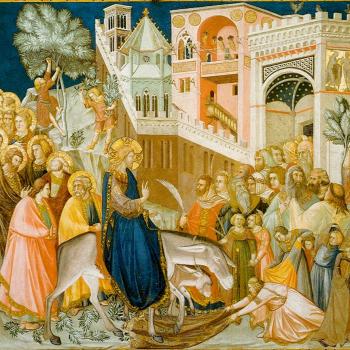In 1915, the Kansas City Star published a short religion column on the theme of “How the Idea of Immortality Developed” (January 17, 1915). The story was clearly aimed at a general audience, and made no pretensions to academic depth, yet ithe author’s main point was that “The whole doctrine of the future life as it is worked out in the New Testament is based on the religious teachings and insights of the writers of the Apocrypha and the Pseudepigrapha of the Old Testament.” That assertion is undeniably correct, but we must be struck by the assumption that non-expert readers would be expected to know or care about “the Apocrypha and the Pseudepigrapha of the Old Testament.” Just where were they getting this knowledge from? Would a popular newspaper today make a similar statement, without a great deal of further explanation?
I have been posting about the discovery of alternative scriptures in the nineteenth and early twentieth centuries, and how they inspired speculations that we might think would have been much very modern. As I have described, books on Gnosticism and alternative gospels proliferated at this time, and so did the radical theories that they inspired. But there was also a vogue in this era for the “lost scriptures” of the Old Testament, works that have in modern times caused a serious rethinking of Second Temple Judaism and Christian origins. And as that newspaper example demonstrates, such ideas were reaching a mass public. (There was nothing special about the Kansas City Star, the reference just came to hand!)
No, the world of 1914 did not yet have the Dead Sea Scrolls, and it was only gradually gaining access to the Slavonic Pseudepigrapha. But just how much was available, and in easily accessible editions, is deeply impressive.
One turning point in English-language scholarship came with W. J. Deane, Pseudepigrapha: An Account of Certain Apocryphal Sacred Writings of the Jews and Early Christians (Edinburgh, 1891). For many years thereafter, the key name was Irish scholar Robert H. Charles, who edited and translated many works from the 1890s onward. These included the Book of 1 Enoch (1893 and 1906), Jubilees (1895 and 1902), The Apocalypse of Baruch (1896), The Assumption of Moses (1897), Ascension of Isaiah (1900), and the Testaments of the Twelve Patriarchs (1908). In 1896, he co-edited The Book of the Secrets of Enoch – that is Second or Slavonic Enoch.
Charles then edited a hugely popular collection, The Apocrypha and Pseudepigrapha of the Old Testament in English (Clarendon Press, 1913). The first volume of this included works that Protestants deemed apocryphal, such as Maccabees, but the second volume was much bolder. In a sizable volume (some nine hundred pages) Charles and his fellow contributors included English translations and commentaries of Jubilees, the Letter of Aristeas, Books of Adam and Eve, Martyrdom of Isaiah, I Enoch, Testaments of the Twelve Patriarchs, Sibylline Oracles, Assumption of Moses, the Syriac and Greek Apocalypses of Baruch, Psalms of Solomon, and the Story of Ahikar. Also included was “The Fragments of a Zadokite Work,” which we now know to have been the Community Rule of the Qumran sect.
It was the popularity of this Charles-edited volume that inspired the newspaper story I cited: this was just something literate people were expected to be interested in.
In 1917, the SPCK published Charles’s edition of Enoch, which would have reached widely into the homes of clergy and educated laity around the English-speaking world. Charles also wrote the magnificent entries on this literature, and on individual works, for the legendary 1911 edition of the Encyclopedia Britannica. In 1914, he published Religious Development Between the Old and the New Testaments (London: Williams and Norgate), with another survey of the pseudepigraphic literature.
Other significant editions and collections followed, suggesting a really enthusiastic mass market. 1917 brought Charles F. Horne, ed., The Sacred Books and Early Literature of the East (Parke, Austin and Lipscomb, 1917), and the following year, William J. Ferrar published The Uncanonical Jewish Books (SPCK 1918). One great achievement of these years was M. R. James’s The Lost Apocrypha of the Old Testament (SPCK, 1920), a dazzlingly wide-ranging work that assembled allusions and references to many lost texts. In 1927, E. A. Wallis Budge published his translation of the important Syriac work The Book of the Cave of Treasures. A major source for Jewish extra-Biblical traditions was Louis Ginzberg, Legends of the Jews, 2 vols., 1909-13.
In 1926, Rutherford H. Platt, Jr. published The Forgotten Books of Eden, which basically offered the same texts as the 1913 R. H. Charles collection of Apocrypha and Pseudepigrapha, but without the critical apparatus (and also with some sensational media advertising).
The fact of translation meant that these works were not just available, but they were accessible to non-specialists, to a mainstream educated readership that did not necessarily have any grasp of scholarly languages. Beyond their availability in popular (translated) books, such ideas could now be accessed very widely through magazines and newspapers, in a massive opening or democratization of technical Biblical scholarship.
Reading such alternative scriptures offered many exciting and even subversive insights. The Enochic literature in particular offered a critical context to the world of the New Testament and of Jesus’s own thought, and proved that the distinctive ideas of the Jesus movement had not come from a vacuum. It could now be shown just how many parallels there were to the messianic and apocalyptic themes of that Jesus movement, many of which were subsequently lost. If you did not know Enoch, you had nothing worthwhile to say about Jesus’s use of the “Son of Man” concept. As was well recognized by 1910 at the latest, without the pseudepigrapha, you had no basis on which to discuss Revelation or Christian apocalyptic.
When set aside the effervescent theorizing of Paul’s own time about Adam and the Garden of Eden, the apostle’s own theologies seemed less innovative. Charles claimed that Paul was drawing heavily on the Testaments of the Twelve Patriarchs. And as an author noted in Contemporary Review in 1910, “our Lord himself almost certainly read the book known as the Testaments of the Twelve Patriarchs.”
But if Jesus and the evangelists had read the alternative scriptures with such interest and reverence, what did that suggest about the limits of canon in that ancient time? Might it have been far wider than conventional Christian (and especially Protestant) assumptions? Just what were the proper limits of canon? Specifically, which books properly belonged in the Old Testament? All these themes spoke powerfully to the ongoing debates between Fundamentalists and Modernists, which were then approaching their height. Before debating the authority of the Bible, one crucial question to be determined was: which Bible? What books did it contain?
Most tellingly, the tidal wave of recent discoveries created a steady public expectation for ever more sensational finds, suggesting that our knowledge of “Bible Truth” was constantly in flux. The Truth was somewhere out there, we just had not dug it up as yet.
One final thought. Imagine someone born around 1900, who eventually went on to an academic career, and focused on religious themes – on Biblical scholarship or early Christianity, or eventually the Dead Sea Scrolls or the Nag Hammadi gospels. That person would have reached their height of influence and achievement in the 1940s, 1950s, and 1960s. Even so, he or she came of age around 1920, when all these daring ideas about alternative texts were so powerfully shaping the intellectual atmosphere. That would at least have created an expectation of what might be expected in later discoveries, and also, how those later finds might be interpreted. Even for texts as potentially startling as the Dead Sea Scrolls, it would have been impossible for scholars to come to them without those underlying assumptions and presuppositions, and that deep background in reading. Those later discoveries were perhaps much less surprising than we sometimes think.
For the whole concept of the Pseudepigrapha, see Annette Yoshiko Reed, “The Modern Invention of Old Testament Pseudepigrapha,” Journal of Theological Studies, 60 2009: 403-36.

















